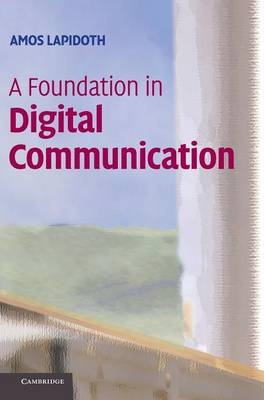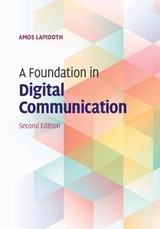
A Foundation in Digital Communication
Cambridge University Press (Verlag)
978-0-521-19395-5 (ISBN)
- Titel erscheint in neuer Auflage
- Artikel merken
This intuitive yet rigorous introduction derives the core results of digital communication from first principles. Theory, rather than industry standards, motivates the engineering approaches, and key results are stated with all the required assumptions. The book emphasizes the geometric view, opening with the inner product, the matched filter for its computation, Parseval's theorem, the sampling theorem as an orthonormal expansion, the isometry between passband signals and their baseband representation, and the spectral-efficiency optimality of quadrature amplitude modulation (QAM). Subsequent chapters address noise, hypothesis testing, Gaussian stochastic processes, and the sufficiency of the matched filter outputs. Uniquely, there is a treatment of white noise without generalized functions, and of the power spectral density without artificial random jitters and random phases in the analysis of QAM. This systematic and insightful book, with over 300 exercises, is ideal for graduate courses in digital communication, and for anyone asking 'why' and not just 'how'.
Amos Lapidoth received his PhD in electrical engineering from Stanford University. He was an Assistant and Associate Professor at the Massachusetts Institute of Technology, and is currently Professor of Information Theory at ETH Zürich, the Swiss Federal Institute of Technology. He is a Fellow of the IEEE.
Preface; Acknowledgments; 1. Some essential notation; 2. Signals, integrals, and sets of measure zero; 3. The inner product; 4. The space L2 of energy-limited signals; 5. Convolutions and filters; 6. The frequency response of filters and bandlimited signals; 7. Passband signals and their representation; 8. Complete orthonormal systems and the sampling theorem; 9. Sampling real passband signals; 10. Mapping bits to waveforms; 11. Nyquist's criterion; 12. Stochastic processes: definition; 13. Stationary discrete-time stochastic processes; 14. Energy and power in PAM; 15. Operational power spectral density; 16. Quadrature amplitude modulation; 17. Complex random variables and processes; 18. Energy, power, and PSD in QAM; 19. The univariate Gaussian distribution; 20. Binary hypothesis testing; 21. Multi-hypothesis testing; 22. Sufficient statistics; 23. The multivariate Gaussian distribution; 24. Complex Gaussians and circular symmetry; 25. Continuous-time stochastic processes; 26. Detection in white Gaussian noise; 27. Noncoherent detection and nuisance parameters; 28. Detecting PAM and QAM signals in white Gaussian noise; 29. Linear binary block codes with antipodal signaling; Appendix. On the Fourier series; Bibliography; Theorems referenced by name; Abbreviations; List of symbols; Index.
| Erscheint lt. Verlag | 9.7.2009 |
|---|---|
| Zusatzinfo | Worked examples or Exercises; 6 Tables, unspecified |
| Verlagsort | Cambridge |
| Sprache | englisch |
| Maße | 180 x 255 mm |
| Gewicht | 1600 g |
| Themenwelt | Technik ► Nachrichtentechnik |
| ISBN-10 | 0-521-19395-8 / 0521193958 |
| ISBN-13 | 978-0-521-19395-5 / 9780521193955 |
| Zustand | Neuware |
| Haben Sie eine Frage zum Produkt? |
aus dem Bereich



